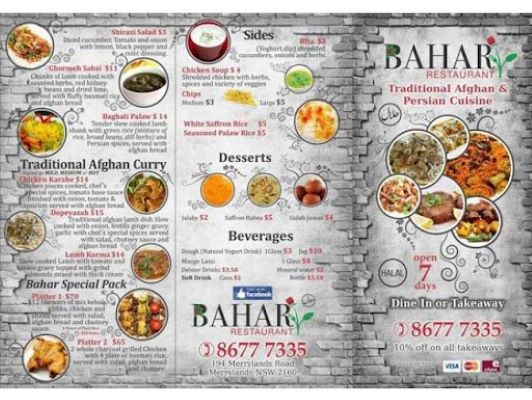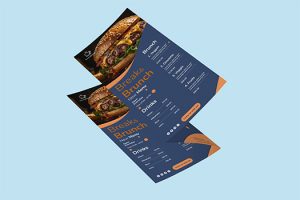Short Description
Wall Menus
Related Products
Additional Information
Wall Menus
Design impactful wall menus to enhance your restaurant’s ambiance. Large, clear, and customizable options for showcasing your menu and specials prominently.
Wall Menus: A Comprehensive Guide
Introduction
Wall menus are a dynamic and increasingly popular method of displaying available offerings in various settings, especially in the hospitality industry. They are typically large, prominently placed displays that showcase a list of products or services for sale, most commonly used in restaurants, cafes, and bars. Wall menus serve both functional and aesthetic purposes, combining clear communication of offerings with visual appeal, enhancing the overall customer experience.
Types of Wall Menus
There are various types of wall menus, each tailored to suit different environments, from casual diners to upscale restaurants. Understanding the types of wall menus can help businesses choose the right one for their brand.
- Traditional Chalkboard Menus: Perhaps the most iconic form of wall menus, chalkboards offer a rustic, approachable, and budget-friendly way to display daily specials or rotating menus. They’re easy to update, providing flexibility for changes, such as seasonal dishes or promotions. Chalkboard menus also allow for artistic flair, with illustrations, stylized fonts, and designs that enhance the ambiance of a venue.
- Digital Menus: Digital menus, often presented on large monitors or LED screens, are becoming more common, especially in fast-casual restaurants and cafés. These menus offer the advantage of real-time updates, allowing businesses to adjust pricing, promote items, and highlight specials quickly. Moreover, they can integrate with a business’s digital marketing strategy, including animations, videos, or interactive features to capture attention and enhance the overall customer experience.
- Magnetic and Modular Menus: Magnetic or modular wall menus use magnetic strips or boards that allow items to be rearranged easily. They are often seen in fast-food chains or establishments with a rapidly changing menu. This type of menu is highly flexible, easy to clean, and allows for the simple addition or removal of items without needing to reprint or rewrite the entire menu.
- Artistic or Painted Menus: Some businesses choose to create permanent wall menus that are hand-painted or artistically designed directly on the wall. These menus offer a unique, high-end aesthetic, often seen in boutique cafés or fine-dining establishments. While not as easy to update, they can make a lasting visual impression and often become a part of the venue’s identity.
Benefits of Wall Menus
- Visibility and Accessibility: One of the primary benefits of wall menus is their visibility. When placed in a prominent location, they are easily accessible to all customers, reducing confusion and wait times. Whether a customer is seated or standing in line, they can quickly assess the offerings.
- Efficient Use of Space: Wall menus make use of vertical space, freeing up counter areas and avoiding cluttered printed menus. This can be especially beneficial in small establishments with limited space. By utilizing walls that would otherwise be bare, businesses can convey a large amount of information without taking up valuable floor space.
- Enhanced Customer Engagement: A well-designed wall menu can engage customers beyond simply listing food or drink options. Creative typography, colors, illustrations, and layout can draw the eye and encourage customers to explore the full range of offerings. In addition, digital wall menus can engage customers through interactive elements, changing graphics, or even integrating social media.
- Flexibility: Some types of wall menus, such as chalkboards or digital displays, provide the flexibility to adapt to changes in real-time. This is particularly useful for businesses with seasonal menus or limited-time promotions. It also allows for highlighting certain items, such as specials or high-margin products, to increase sales.
- Brand Identity and Aesthetics: Wall menus are a great way to reinforce a business’s brand identity. The design of the menu itself—whether it’s minimalist and sleek, playful and colorful, or rustic and homey—should align with the overall aesthetic and ethos of the business. Consistent branding through menu design can make the customer experience more cohesive and memorable.
Best Practices for Designing Wall Menus
- Legibility: The primary function of a menu is to communicate, so legibility is crucial. Ensure that the font size is appropriate for the viewing distance and that there is sufficient contrast between text and background. Avoid overly decorative fonts that may hinder readability.
- Prioritize Menu Items: Arrange items logically, often by category, such as appetizers, mains, and desserts. Popular or high-margin items should be given prime positions at eye level or highlighted in some way, such as using larger fonts or different colors.
- Use of Color: Colors can be used to draw attention to specific items or to create a mood that complements the establishment’s vibe. However, avoid overloading the menu with too many colors, which can make it harder for customers to focus.
- Keep it Updated: Regularly updating wall menus is essential, especially for businesses that frequently change their offerings. Outdated menus can lead to customer frustration and a negative perception of the business.
Conclusion
Wall menus are a versatile and essential tool for many businesses. Whether traditional or modern, their ability to combine functionality with style makes them a valuable asset. When designed and implemented effectively, wall menus not only communicate offerings efficiently but also enhance the customer’s overall experience, leaving a lasting impression of the brand.
Get Your Quote
My Account
About Us
Our Products
Contact
Follow Us On
We Accept








